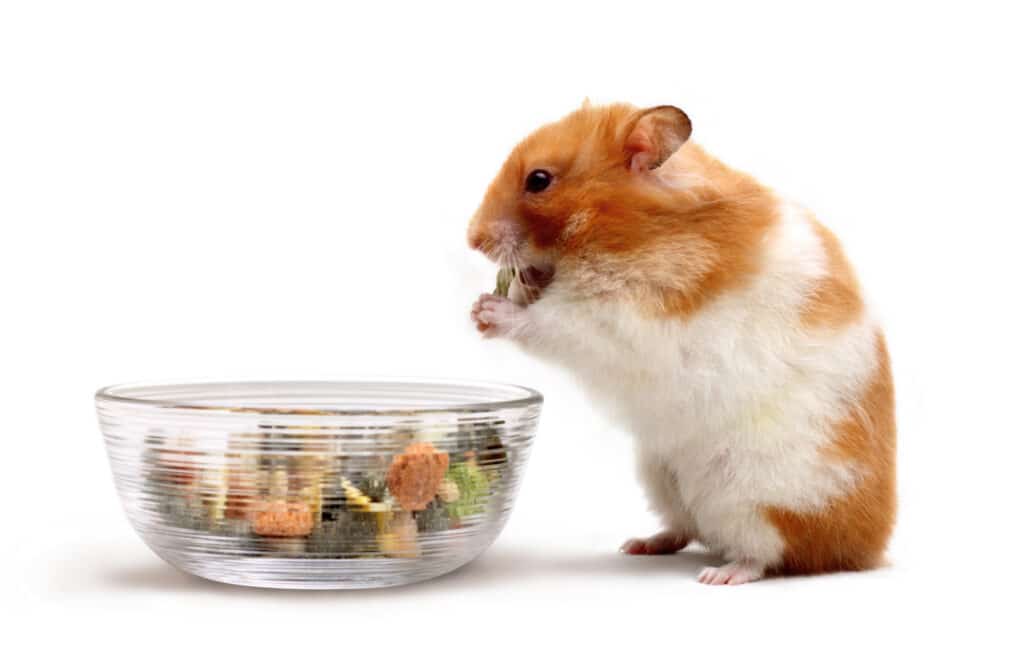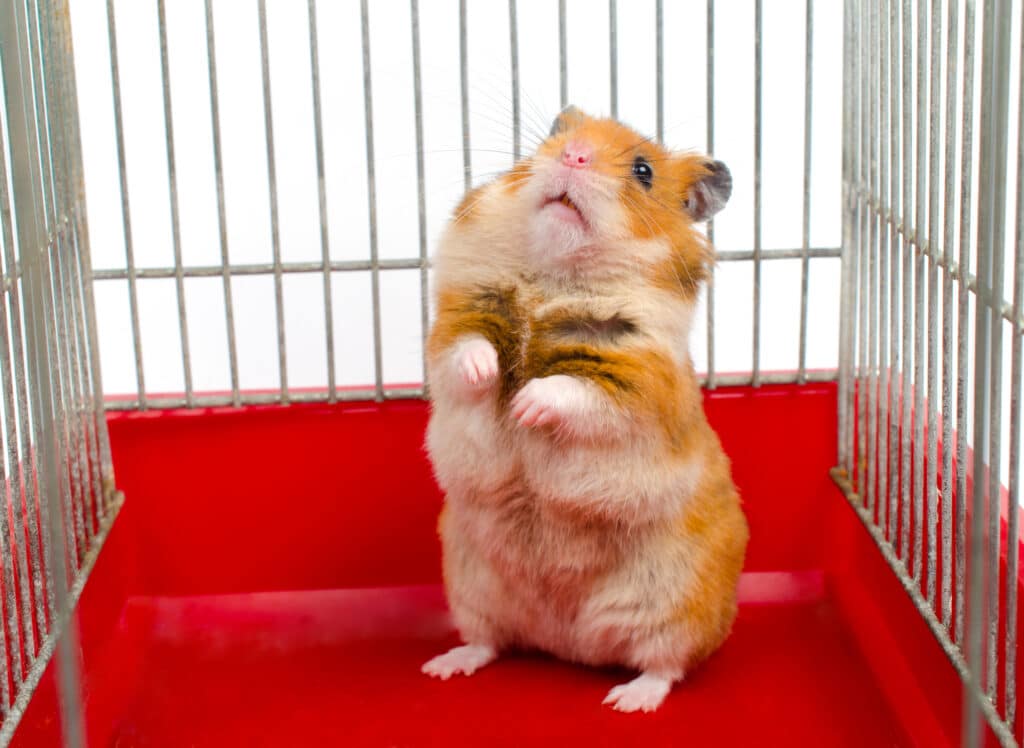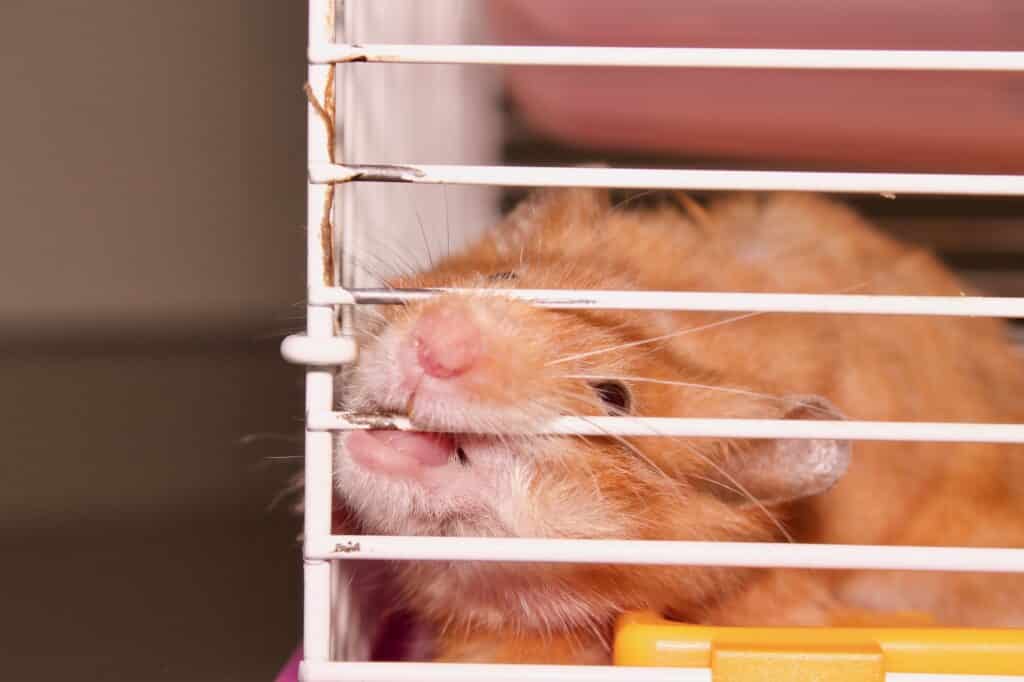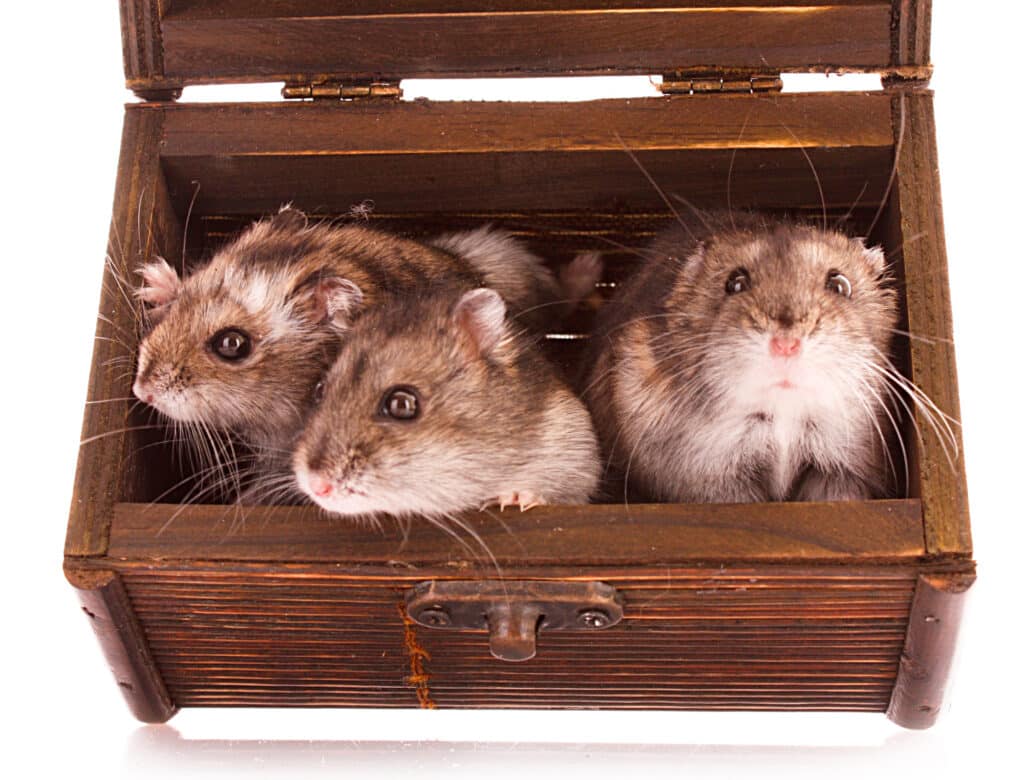Buying any pet is a huge decision. After all, even though owning a pet brings a lot of joy, it is also a big responsibility. Some people may not be prepared to handle this responsibility. So, buying a small pet, like a hamster, is the right choice for such people. If you are one such person and are considering getting a hamster, you might want to know how long hamsters live. It can not only help you decide if a hamster is the right pet for you but also help you find the hamster breed that would suit you the most.
How long do hamsters live? What is the average lifespan of a hamster? What can you do to help them live longer? Read this blog post to find out.
How long do hamsters live?
Of the 19 species of hamsters, only five are kept as pets. Let’s look at these five breeds and find out how long each breed of hamster typically lives.
How long do Syrian hamsters live?
Syrian hamsters are the most common type of pet hamsters. They are also the biggest pet hamster in terms of size. They originated from Syria. Adult Syrian hamsters can grow up to 9 inches in length and weigh up to 5.3 ounces.
Syrian hamsters can live for two to three years, or at times, even up to four years, with proper care.
How long do dwarf hamsters live?
Besides the Syrian hamster, four other hamster breeds are kept as pets. They are called dwarf hamsters because they are far smaller than the Syrian hamster. Let’s look at these dwarf hamsters and how long they live.
How long do Chinese hamsters live?
Chinese dwarf hamsters come from the deserts of China and Mongolia. They can grow up to 5 inches in length and weigh up to 2 ounces. They can live for 2.5 to 3 years when cared for properly.
How long do Campbell hamsters live?
Campbell dwarf hamsters are found in Kazakhstan, Mongolia, China, and Russia. They can grow up to 4 inches in length and weigh up to 2 ounces. Campbell dwarf hamsters can live for 2 to 2.5 years.
How long do Russian dwarf hamsters live?
Russian dwarf hamsters (also known as Winter White hamsters and Djungarian hamsters) are found in Kazakhstan, Siberia, Mongolia, and Manchuria. They can grow up to 3 inches in length and weigh up to an ounce. They can live for 1.5 to 2.5 years.
How long do Roborovski hamsters live?
Roborovski hamsters are the smallest hamster breed. They are found in China, Mongolia, and Kazakhstan. They grow up to 2 inches in length and weigh just 0.88 ounces. Robo hamsters can live for 2 to 3 years or even up to 3.5 years when cared for properly.
Why do hamsters live such short lives?
A hamster’s life appears to be too short compared to a human’s. But why do hamsters (and other small animals) have much shorter lives?
Warning: This section is for science nerds. If you’re not one, feel free to skip it.
As you might have already observed, an organism’s lifespan is often proportional to its size (There are exceptions to this rule). It is due to the following reasons:
- Smaller animals like hamsters have shorter lifespans because they age faster than us. But what is aging? Aging is the process that causes cell dysfunction and death. When an organism is young, its cells divide faster to replace dead and dying cells. As an organism ages, the ability of its cells to reproduce slows down gradually (Source: TED). In addition to that, old cells do not perform their functions as effectively as newer ones. So, the organism dies eventually.
- Smaller animals have fewer chances of fending off predators. So, their bodies have evolved in such a way as to become sexually mature faster, mate, and produce more offspring to extend their progeny and keep their species alive. But reaching sexual maturity accelerates aging because the body must allocate resources between self-maintenance and reproduction (Source: The National Academy of Sciences, USA). So, small animals like hamsters tend to reach sexual maturity earlier, reproduce more, age faster and die sooner when compared to larger animals like humans.
- Harmful chemical compounds called Free Radicals are created in the body due to many normal physiological activities. These free radicals damage the cells and DNA, creating unwanted mutations and diseases like cancer. However, organisms contain a unique suite of genes that can stop such abnormal cell growth. But if these genes get damaged, they lose their protective function. Larger animals, like elephants, contain multiple copies of these genes. So, if one gene gets damaged, other copies of this gene can take over, thereby reducing the risk of age-related diseases (Source: RTE). But smaller animals like hamsters do not have so many copies of these genes. So they age faster.
What factors affect a hamster’s lifespan? How can you help your hamster live longer?
Just like any animal’s lifespan, a hamster’s lifespan in the wild also depends on many factors – Predators, climate, availability of food, genes, etc. But a pet hamster’s life depends mainly on his genes, nutrition, surroundings, and you. Let’s look at these factors in detail below:
Genes
Some breeds of hamsters are more prone to some diseases than others. For example, dwarf hamsters are tiny. So, their bodies cannot handle a lot of sugar. Therefore, dwarf hamsters are prone to diseases like diabetes and obesity.
However, Roborovski hamsters, despite being the smallest hamsters, are not prone to these diseases as much as the other dwarf hamsters because they are also one of the most active hamster breeds.
Syrian hamsters are also not prone to diabetes and obesity. But Syrian hamsters are more prone to diarrhea and Wet Tail.
Roborovski hamsters are also prone to diarrhea if they are fed a diet that contains a lot of water.
Hybrid dwarf hamsters, which are a crossbreed of Winter White (Russian dwarf) hamsters and Campbell dwarf hamsters, are often infertile and prone to neurological issues. These neurological issues can cause them to spin in circles or backflip. Even though this may look amusing to humans, it is not healthy for hamsters. They also have a reduced lifespan (Source: Crittery Exotics).
So, depending on a hamster’s breed and his genes, he may be more prone to some diseases than others.
You have no control over what diseases your hamster is prone to due to his genetic disposition. Hamsters were creatures that were initially difficult to keep as pets. So, to make them more docile, selective breeding was used, which has led to various genetic problems. Breeding to create more fancy coat colors and types has also given rise to various genetic problems (Source: Cha Hamsters).
So, when you go to a pet shop and buy a hamster, you don’t know what diseases he is prone to. Even though genetic disposition to certain diseases and health issues is the biggest factor in deciding how long your hamster will live, you really have no control over it.
But you do have control over the other remaining factors. So, that’s what you should focus on. Let’s look at these factors without further ado.
Nutrition
1. Avoid food items that are dangerous for your hamster
Nutrition is the next factor that determines how long a hamster lives. As explained above, hamsters are tiny animals that are prone to various diseases. So, food items that can cause such diseases can shorten the lifespan of hamsters.
For example, too much of sugary food items (like grapes) can be detrimental to the health of hamsters, especially dwarf hamsters, since they can cause obesity and diabetes. Sugary food items can also cause dental problems in hamsters. So, limit the amount of sugar in your hamster’s diet.
Foods that contain too much acid content (like oranges) are also dangerous for hamsters, especially dwarf hamsters because they can damage the digestive systems of these tiny animals, causing diarrhea and other digestive issues. The acid content in these food items can also erode the enamel of hamsters, causing tooth decay. So don’t give your hamster food items that are highly acidic.
Roborovski hamsters have evolved to survive in arid conditions. So their bodies can conserve water very well. Therefore, their digestive items cannot tolerate food items with a lot of water (E.g., cucumber). So, do not give food items with high water content to Roborovski hamsters.
Hamsters should also not eat food items with high sodium content (like cheese) because they can cause obesity and cardiovascular problems. So, avoid food items that are rich in sodium.
Hamsters should also not be fed food items with a high calcium content (like oregano) because it can cause bladder stones. So, avoid food items that are rich in calcium.
To get the complete list of food items that hamsters should not eat, read: Food hamsters cannot eat.
2. Provide a well-balanced diet
While avoiding all food items that can be dangerous for your hamster, provide your hamster with a well-balanced diet. His diet should primarily comprise commercial pellets and seed mix. Other healthy food items like grains, nuts, fruits, and vegetables can be included as occasional treats. To get an idea of what treats you can give your hamster, including the right amount and frequency depending on breed, and understand how to create a well-balanced diet, read: What can hamsters eat?

Also, keep fresh drinking water for your hamster every day.
Following the steps mentioned above can help your hamster lead a happy life and live longer.
Surroundings
1. Avoid stress
As in humans, stress can be bad for hamsters as well. Only that it is much worse in the case of hamsters. Too much stress can cause diarrhea in hamsters which can quickly escalate to Wet Tail, which can cause death within 48 hours. So, a hamster’s surroundings should be free of everything that can stress him out.
A hamster has very poor eyesight when compared with humans. But his sense of smell, sense of hearing, and ability to detect movements are far superior to humans. Therefore, to keep your hamster stress-free, make sure that you:
- Do not make loud sounds.
- Do not move the hamster cage suddenly.
- Do not let other bigger pets, like cats and dogs, near the hamster cage.
- Do not let the room get too hot or too cold. The ideal temperature for your hamster to stay healthy is 18°C to 24°C. Also read: How to keep your hamster warm on a low budget?
- Do not let the cage become too smelly. Remove uneaten food items and soiled bedding every day.
- Do not wake your hamster suddenly from sleep. Also, avoid other habits that can scare your hamster. Also read: Why is your hamster scared of you?

Besides stress, an unhygienic environment can also reduce the lifespan of hamsters because it can lead to the growth of harmful pathogens. These pathogens can infect your hamster and cause diseases like Wet Tail, Salmonellosis, Escherichia coli infection, and Tyzzer disease, making your hamster sick and eventually killing him. So, clean the hamster cage regularly. Once a week, you should replace most of the bedding and sanitize the cage.
2. Avoid boredom
Wild (Roborovski) hamsters can run up to 6 miles in a single night. Hence, pet hamsters need a spacious cage so that they can run the same (or similar) distance inside the cage. If not, they can get bored and/or depressed quickly, which can affect their lifestyle and lifespan. In general, hamsters need a cage that is at least 24″ x 12″ x 12″ big.
Hamster wheels are a great addition to the hamster cage because they can give your hamster the satisfaction of running long distances even though he keeps running on the same wheel. They also help keep your hamster active, reducing the risk of obesity and diabetes. Dwarf hamsters need hamster wheels with a diameter of at least 5″, while Syrian hamsters need hamster wheels with a diameter of at least 12″.
By having a spacious cage and a big hamster wheel, you can not only prevent your hamster from getting bored but also ensure that he gets enough physical activity, which can help him live longer. After all, exercise is essential not only for humans but also for animals.
The incisors of hamsters keep growing constantly. So, hamsters must constantly wear them down by gnawing. If not, they can grow too long, causing abscesses and/or piercing their skull. So, you should keep enough chew toys inside the cage.

If not, your hamster may start chewing the bars of the cage, which can be dangerous for him because the paint on the bars may contain harmful chemicals.
3. Nurture his natural instincts
Hamsters have a natural instinct to burrow and hide away from predators. So, you should help your hamster bring this natural instinct out.
Provide a lot of bedding (6″ for dwarf hamsters and 12″ for Syrian hamsters) to stimulate your hamster’s instinct for burrowing. Also, make sure that you buy the right type of bedding. Aspen wood shavings and soft paper bedding are the best for hamsters. Avoid bedding made of pine or cedarwood shavings and sawdust. For more information, read our hamster burrowing guide.
Keep hamster hideouts in the cage for your hamster to hide in when he feels threatened.
Wild hamsters spend most of their lives in dark, cramped tunnels, running and climbing through them. So, hamsters love to climb and explore cramped spaces. So, a multi-level cage can help stimulate your hamster’s natural instinct of climbing. But make sure that there aren’t any open ramps so as to prevent your hamster from jumping from one level to another and injuring himself.
The best way might be to connect different levels using a tube system. A tube system can make your hamster happy and might make him feel as if he is in a tunnel, in addition to making sure that your hamster doesn’t fall down and injure himself.
Hamster owner – Yes, that’s you!
Unlike wild hamsters, the lifespan of pet hamsters depends on the hamster owner as well. Besides the obvious need for food, hamsters depend on their owners to lead long lives.
Hamsters, especially golden hamsters, are highly territorial creatures. While dwarf hamsters can at least tolerate other members of their species if they have grown up with them together since childhood, Syrian hamsters cannot tolerate other members of their species at all. However, they can bond well with humans. So, once tamed, they will also become emotionally dependent on you.
Therefore you should spend time and play with your hamster regularly. It not only helps keep your hamster active but also keeps him emotionally healthy.
Circadian clocks or rhythms are 24-hour cycles that regulate various functions and processes in the body. They are a part of the body’s internal clock. Different processes in the body have their own rhythms, which synchronize with a master clock in the brain (Source: Sleep Foundation). But this master clock depends on environmental cues like light.
An inconsistent Circadian rhythm can not only affect our sleep but may also affect our physical and mental health.
Just like humans, hamsters have their own Circadian rhythms (Source: Squeaks and Nibbles). Maintaining a constant Circadian rhythm can help hamsters live longer. Altering the Circadian rhythm of a hamster can affect various biological processes like orientation, reproduction, and hibernation. So, don’t try to alter your hamster’s internal rhythm just for your convenience.
Hamsters are crepuscular creatures, i.e., they are active at dawn and dusk. But if you return home late in the night every day, you may find your hamster sleeping. So you may never get to play with him at night. Therefore you may be tempted to wake him up and play with him. But doing this often could alter his Circadian rhythm, which can affect his sleep as well as his physical and mental health.
You should also observe your hamster every day for any changes in his pee color, poop texture, and behavior (lethargy, loss of appetite, laziness, etc.). If your hamster is sick or hurt himself while playing, there will usually be a change in one or more of these three things. A responsible hamster owner will keep an eye on their hamster so that any problem can be identified while it is still in its initial stages.
Also read:
What does a hamster’s pee tell about his health?
What does a hamster’s poop tell about his health?
So, if you observe a change in your hamster’s pee color, poop texture, or behavior, take him to a vet. The vet can diagnose the underlying problem, give medicines, and advise you on the necessary course of action.
You should also schedule regular check-ups for your hamster with a veterinarian.
Until now, we have seen how you can help your hamster live a long life. But regardless of what you do, you cannot stop your hamster from getting old; you can only delay it. But what if your hamster is old? What do you do?
Is your hamster getting old? How to find out?
An old hamster will not be as energetic as a young hamster. Moreover, various biological systems in a hamster’s body will lose their efficiency as he ages. So, if your hamster is getting old, he will show some of the following symptoms:
- He will play less
- He will sleep more
- He may start losing hair
- He may start losing his senses of vision, hearing, and smell
- He may not show much interest in treats
- His weight may fluctuate due to his inconsistent food intake
How to take care of an old hamster?
As explained above, an old hamster will not have as much energy as a young adult hamster. So, he may not be able to run as much as before and may not show any interest in searching for hidden treats. If that’s the case, keep his food bowl and water bottle close to his nest.
Keep the room calm, devoid of any disturbances. Move slowly when you pick him up so as to prevent scaring him.
If a hamster is old, his body may not be able to heal quickly. So, remove anything in the cage that can injure him. If you have any tall platforms from which your hamster can fall and hurt himself, remove or prevent access to them.
Squash solid foods to create semi-solid foods so that he can digest them easily.



